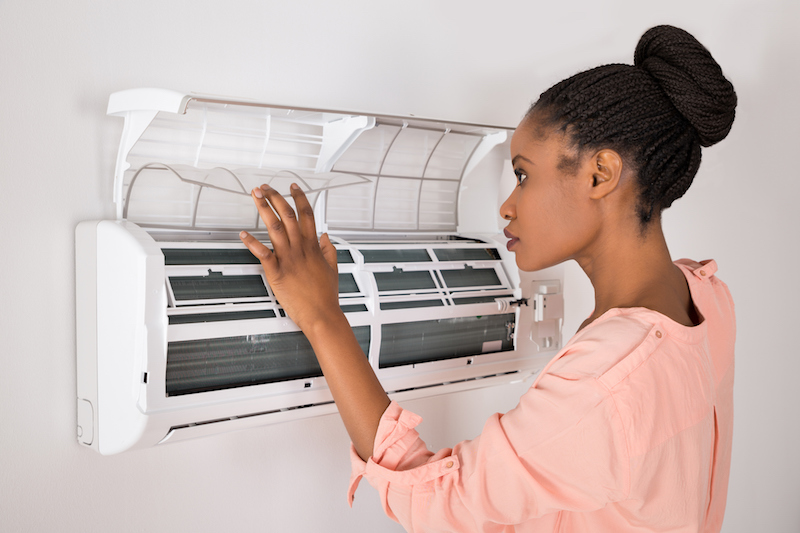
You shouldn’t need to compromise on comfort or drain your wallet to keep your house at a pleasant temperature during hot days.
But what is the best temperature, exactly? We discuss suggestions from energy experts so you can determine the best temp for your house.
Here’s what we advise for the most energy-efficient setting for air conditioning in Sarasota.
Recommended Thermostat Settings for Summer
Most families find setting the thermostat at 72-73 degrees provides ideal comfort. However, if there’s a major difference between your indoor and outdoor temperatures, your AC expenses will be higher.
These are our recommendations based on the U.S. Department of Energy (DOE) and ENERGY STAR®.
While at home: 78 degrees. While that seems warm, there are methods you can keep your home cool without having the AC running frequently.
Keeping windows and curtains down during the day keeps cool air where it belongs—within your home. Some window treatments, such as honeycomb shades or plantation shutters, are created to deliver added insulation and better energy conservation.
If you have ceiling fans in your house, the DOE says you can move thermostat settings about 4 degrees higher without sacrificing comfort. That’s because they freshen by a windchill effect. Because they cool people, not spaces, turn them off when you exit a room.
If 78 degrees still feels too hot at first glance, try running a test for about a week. Begin by raising your thermostat to 78 degrees while you’re home. Then, steadily lower it while adhering to the advice above. You might be shocked at how refreshed you feel at a hotter temperature setting.
While away: 88 degrees. There’s no need to keep the air conditioner running all day while your house is unoccupied. Switching the temp 7–10 degrees hotter can save you anywhere from 5–15% on your electricity bills, according to the DOE.
When you arrive home, don’t be tempted to put your thermostat colder than 78 to cool your home more rapidly. This isn’t useful and usually results in a higher AC cost.
A programmable thermostat is a useful way to keep your temperature controlled, but you need to set programs. If you don’t utilize programs, you risk forgetting to increase the set temperature when you leave.
If you’re looking for a convenient fix, consider installing a smart thermostat. This thermostat links with your phone, so it knows when you’re at home and when you’re away. Then it automatically changes temperature settings for the biggest savings. How much exactly? Typically $180 each year on heating and cooling, according to ENERGY STAR.
Another perk of installing a smart thermostat? You can use your phone to watch and adjust temperature settings from nearly anywhere.
While sleeping: Around 70 degrees. While ENERGY STAR recommends 82 degrees, that might be unpleasant for most families. Many people sleep better when their sleeping space is chilled, so that’s why the National Sleep Foundation advises 60–67 degrees. But that could be too chilly, due to your pajama and blanket preference.
We recommend following an equivalent test over a week, moving your temperature higher and steadily decreasing it to find the best setting for your residence. On pleasant nights, you might find keeping windows open at night and running a ceiling fan is a superior idea than running the air conditioning.
More Methods to Conserve Energy During Warm Weather
There are other methods you can conserve money on cooling bills throughout the summer.
- Upgrade to an energy-efficient AC system. Central air conditioners only are effective for about 12–15 years and lose efficiency as they get older. An upgraded air conditioner can keep your house more comfortable while keeping energy bills small.
- Schedule regular air conditioner maintenance. Annual air conditioner maintenance keeps your equipment running smoothly and may help it work at greater efficiency. It could also help extend its life span, since it allows technicians to discover small issues before they create a major meltdown.
- Change air filters regularly. Use manufacturer instructions for replacing your air filter. A clogged filter can lead to your system short cycling, or run too often, and drive up your utility.
- Measure attic insulation levels. Almost 90% of residences in the United States don’t have enough insulation, according to the Insulation Institute. The majority of southern climates need 13–14” of attic insulation, while northern climates require 16–18”.
- Have your ductwork checked. Ductwork that has come apart over time can seep conditioned air into your attic, walls or crawl space. This can lead to major comfort troubles in your house, like hot and cold spots.
- Seal openings, doors and windows. Keep muggy air where it belongs by closing openings. You can also caulk or weather strip doors to seal more cold air within your home.
Save More Energy During Warm Weather with Airtech Cooling & Heating
If you are looking to use less energy during warm weather, our Airtech Cooling & Heating pros can assist you. Give us a call at 941-377-7956 or contact us online for extra information about our energy-saving cooling options.
